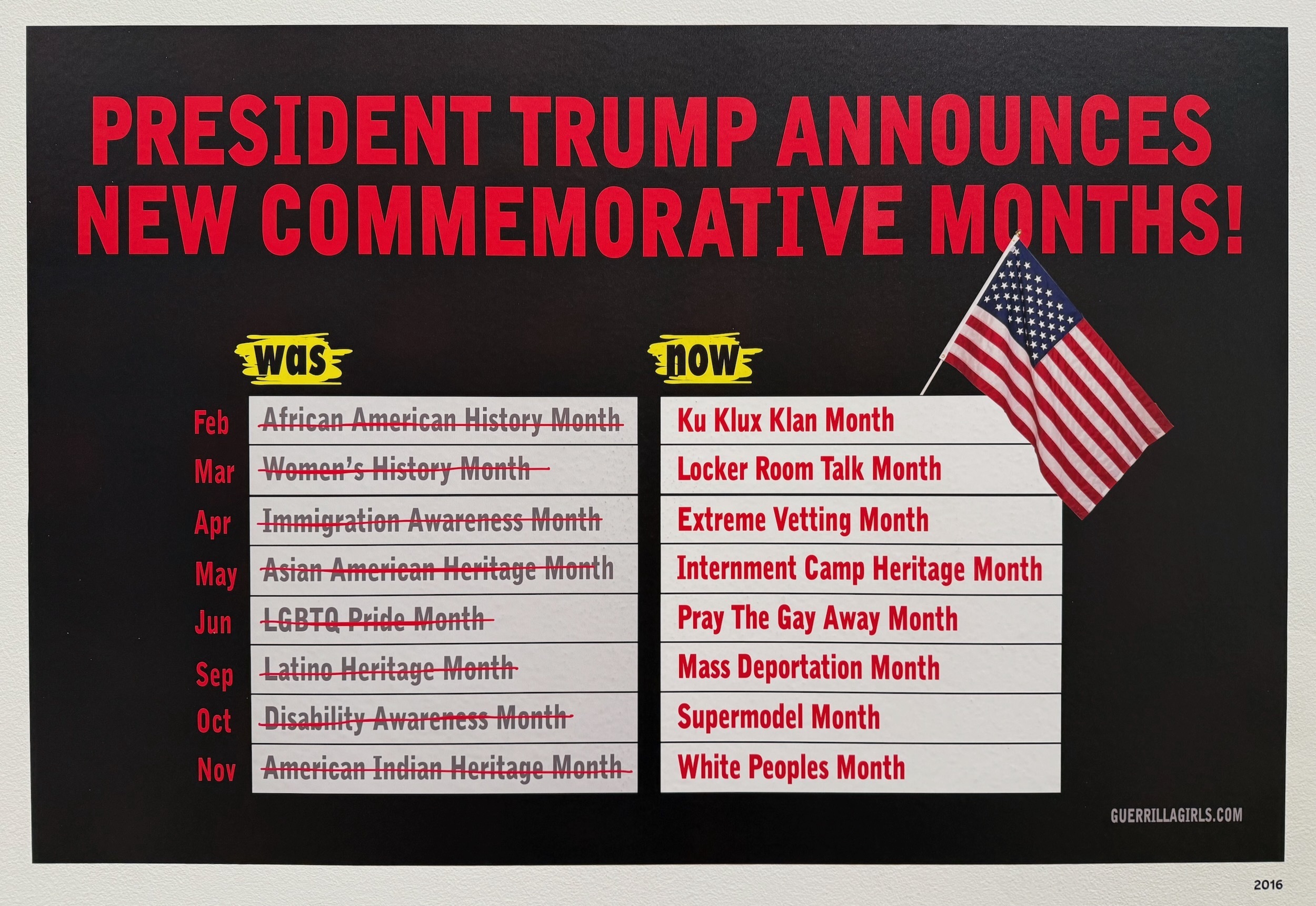I stood in front of a poster created in 2016 by the renowned Guerrilla Girls collective titled “President Trump Announces New Commemorative Months!” and I was struck at how it could’ve easily been made last week. African American History Month is crossed out and replaced by Ku Klux Klan Month, LGBTQ Pride Month is swapped with Pray the Gay Away Month, and American Indian Heritage Month is supplanted by White People’s Month. It all echoes the patterns of American history from the last 248 years that continue to leave their mark on our daily lives.
This one-room exhibition at Hannah Traore Gallery combines decades of visual activism from the OGs of art-world culture jamming. Early examples took close aim at museums and galleries, while the march of time turned the group’s focus to the broader political realities of the United States, reflecting the larger cultural footprint of the contemporary art field and its impact through visual activism.
I’m not sure if I would consider these works memes, even if they continue to reverberate and inspire new iterations while hiding under the cloak of secrecy — while many memes have points of origin or creators, most surface in the collective pool of anxiety, anger, ridicule, or some other unresolved emotion that pricks at our cultural skin. What is very clear in these pieces is the anonymous group’s extraordinary influence.
Here the machinations of race, gender, and sexuality in the art world have not been politely contextualized, but rather blurted out in black and white — though color is increasingly the medium of choice as technologies and their costs have changed, and our social media diets require more pizzazz. Some things have shifted at museums and galleries, like the increased prevalence of women and non-White artists, while others largely have not.
Last Friday on CNN, Republican pollster Frank Luntz explained that Trump voters are “really, really tired of being accused of either racism or sexism because they voted for Donald Trump, and it’s one of the reasons why so many of them did.” That type of circular logic should sound familiar to art worlders who often feel trapped in a field that purports to celebrate creativity, difference, and sometimes social justice (when there’s funding to be had), while donor fragility kneecaps any and all of those at the earliest inconvenience.
With abortion rights, trans health care, immigration protections, and so many other issues on the precipice after November’s election, I’d love to know what the bat signal equivalent would be as we plead with our art world superheroes to save us. Not all superheroes wear capes; some don gorilla masks. Now, if I told you the origin of that meme, you might not believe me, but we’re way past purity tests, and we need help. Now.

Discrimi-NATION: Guerrilla Girls on Bias, Money, and Art continues at Hannah Traore gallery (150 Orchard Street, Lower East Side, Manhattan) through March 29. The exhibition was organized by the gallery.

